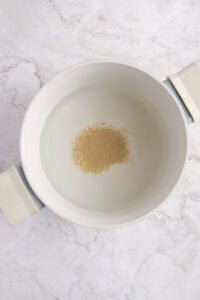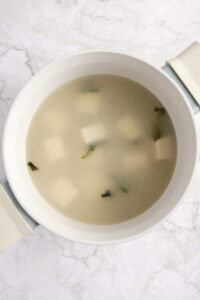Get traditional, umami flavor with this quick and easy Miso Soup Recipe that will have you craving a second bowl!
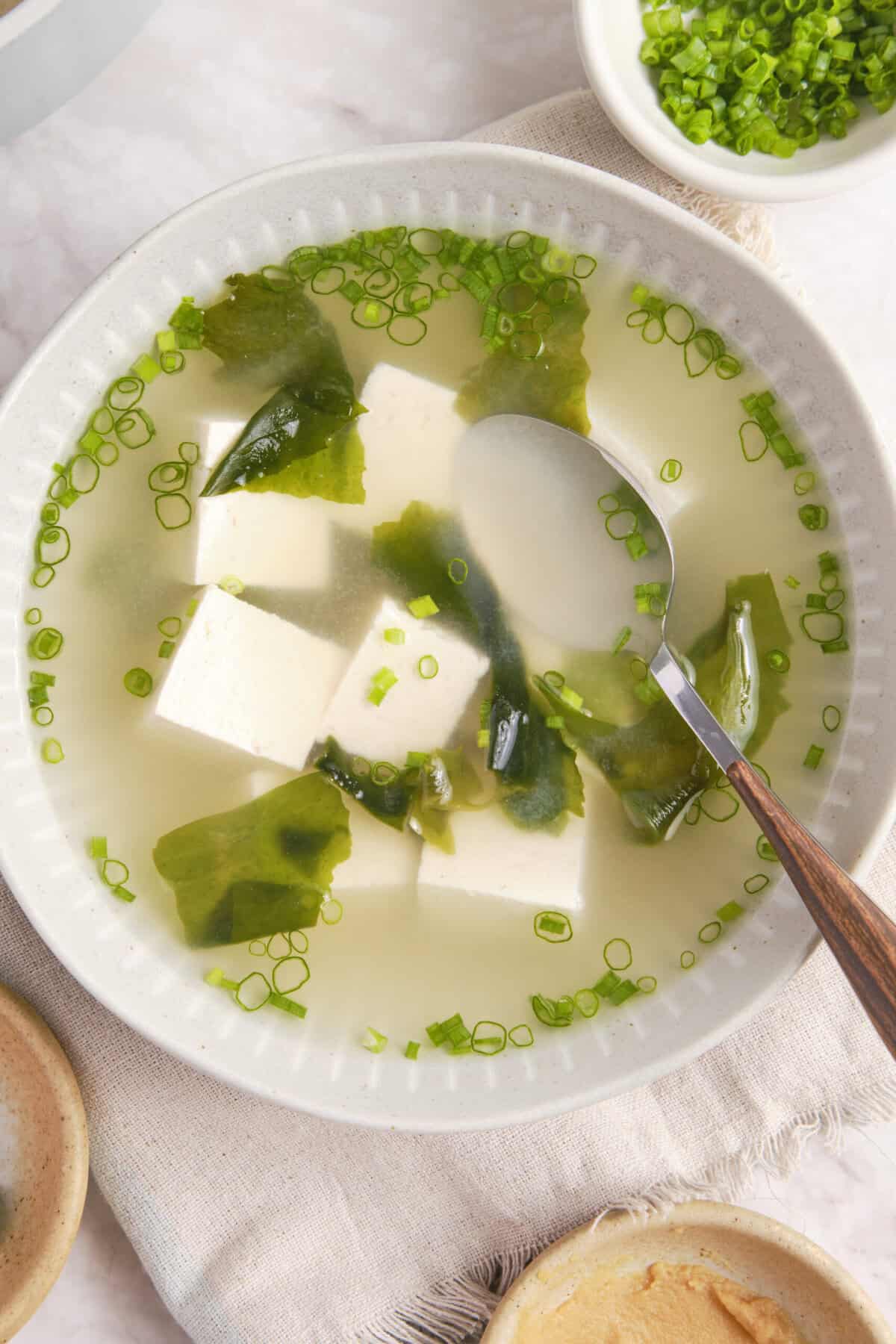
I remember going to Japanese restaurants when my children were young and how much they loved miso soup. One enjoyed the seaweed but not the tofu, while the other preferred tofu but not seaweed, so we would spoon the ingredients from one’s bowl to the other. Learning how to make this miso soup recipe at home allowed me to customize the bowls for each person.
My first foray into “homemade” miso soup began with premixed packets of freeze-dried soup containing itty-bitty diced tofu pieces—nowhere near the nice pillowy cubes you get at restaurants. Even the seaweed was minuscule. As always, it is best to create foods from scratch to get the best results.
I know that using dashi granules is not the same as making dashi (soup stock) from scratch, but the result is fantastic, nonetheless. Besides, there aren’t many ways to make a delicious soup like this in only 15 minutes. You can feel good about serving your family a bowl of deliciously soft tofu, chewy, flavorful seaweed, and crunchy, fresh scallions. It is an excellent combination.
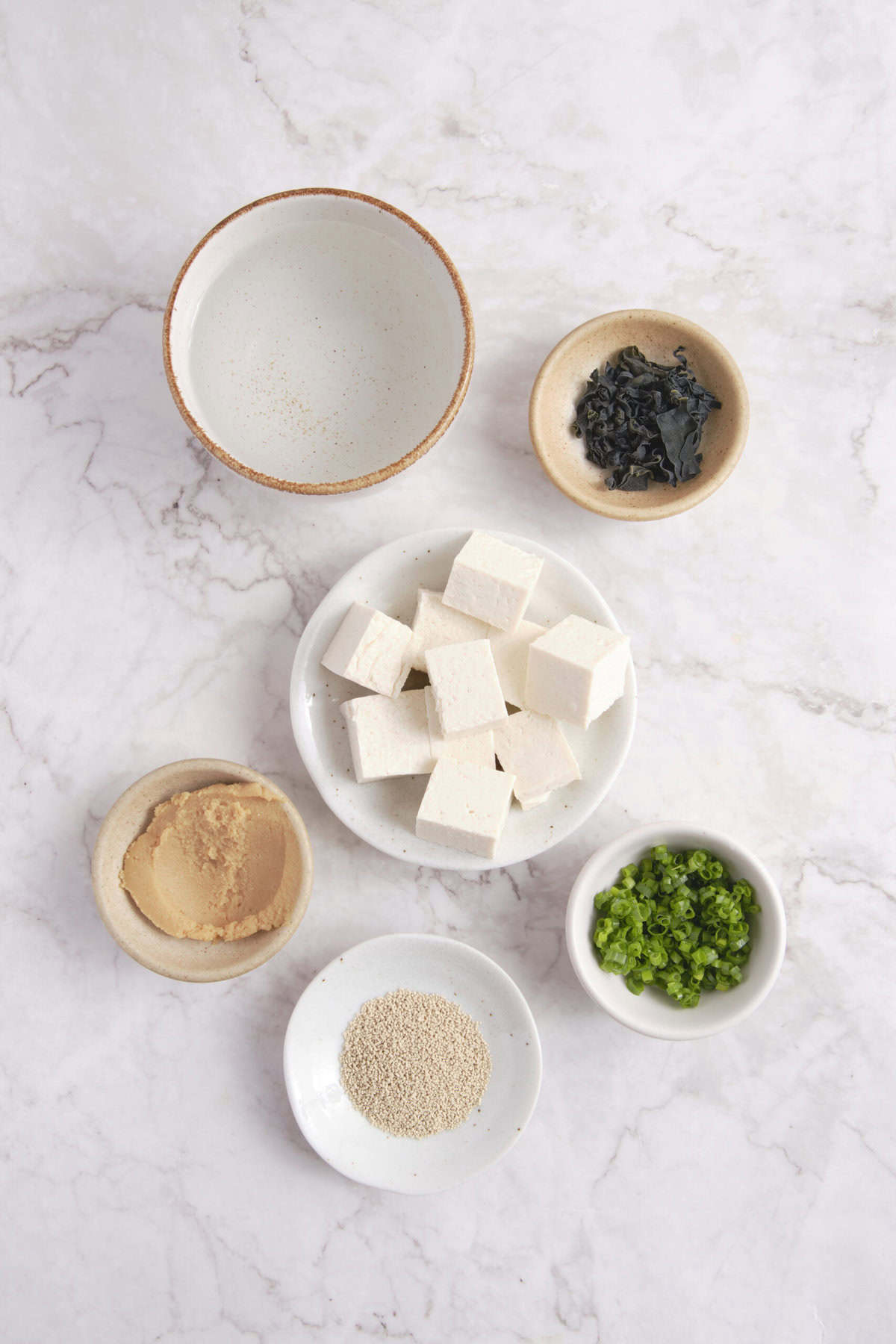
Is Miso Soup Healthy?
This miso soup recipe is considered healthy because it is low in calories, carbohydrates, and fat, while the tofu is a good source of protein and calcium. It is naturally gluten- and dairy-free, though it is not vegan or vegetarian because the dashi contains fish. Like other fermented foods, miso paste brings probiotics to the dish, which can benefit digestive health. Be aware that miso and dashi granules are high in sodium, so this soup is not a good choice for a low-sodium diet.
Enjoy The Many Flavors Of Miso
Miso is made with soybeans fermented with koji, a fungus cultivated on grains, and there are over 1,300 types of miso worldwide. The paste has a nut butter-like texture, and there are far more ways to use it than just in soup.
White miso, also known as shiro miso, is what most people associate with this ingredient, as it is typically the base for the soup. It is less intense than other types, and slightly sweet due to its short fermentation process and its high proportion of koji. White miso is used in lighter dishes, such as marinades, dressings, fish, vegetables, chicken, and soups.
Red miso, also called aka miso, is made when soybeans are fermented for a longer period of time (as long as 10 years!) and consists of more soybeans proportionally to rice koji. With a salty, concentrated flavor and bright appearance, it is more suited to hearty dishes like stews. If you mix white and red miso, you get awase miso with its bronze hue and versatile uses. You may also have heard of mugi miso, a mild-tasting mixture of barley koji (not gluten-free) and fermented soybeans, or hatcho miso, a thick, dark, and intensely flavored product made from a highly concentrated mix of soybeans, salt, and water.
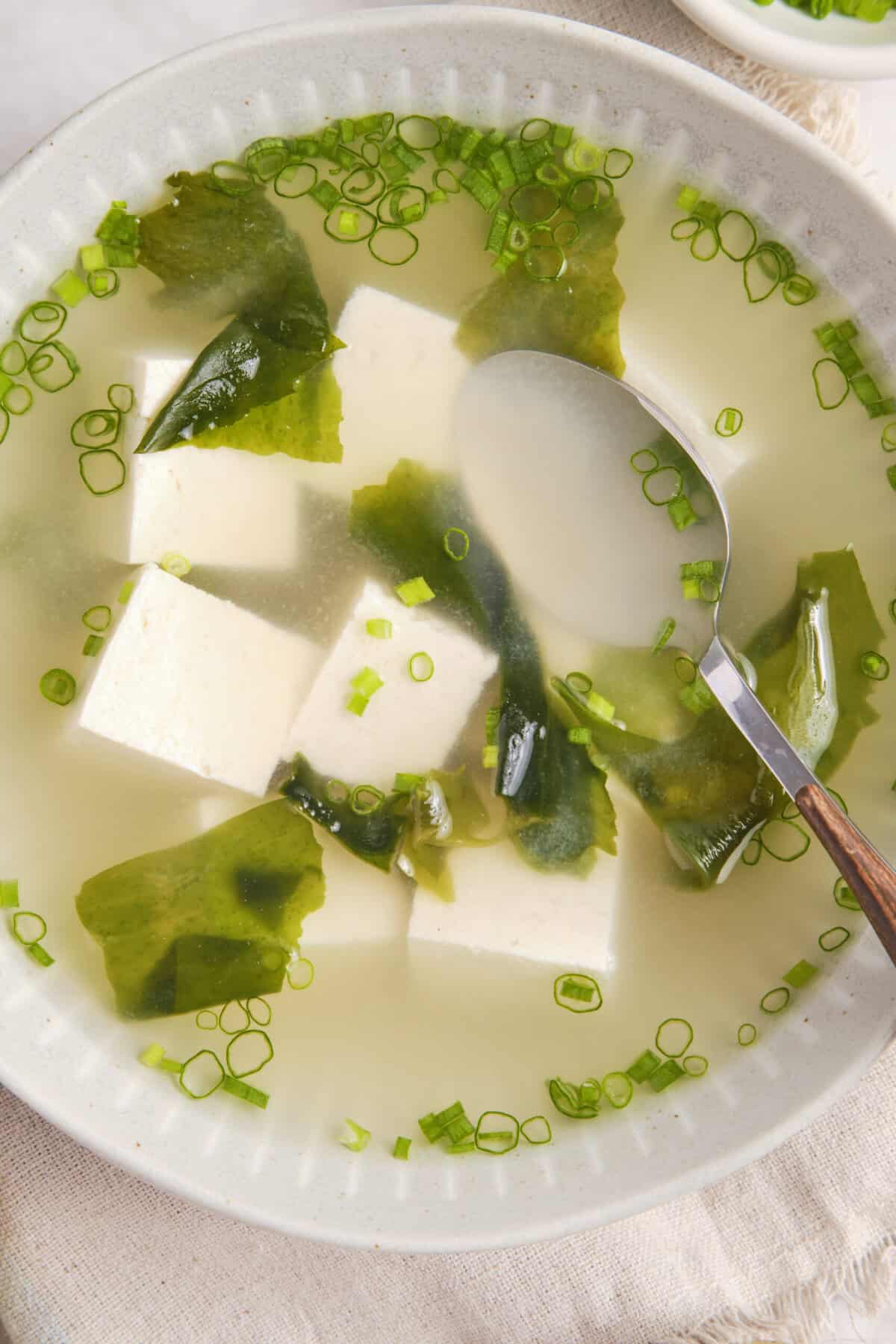
FAQs & Tips
It is best to store the miso soup base separately from the tofu, seaweed, and scallions. Once cooled to room temperature, each component can be refrigerated in airtight containers for up to 4 days. You can also freeze the broth separately for up to 2 weeks, defrosting it overnight in the fridge before reheating and adding the tofu and seaweed. Be sure to give the miso a quick stir before serving, since the miso often separates.
Dashi is a Japanese soup stock made from dried seaweed (kombu) and dried, smoked fish (bonito flakes). Instant dashi, or dashi granules, is made by grinding and mixing dried bonito flakes and kelp with other seasonings into tiny granular pieces. The dashi granules can then be dissolved in water or other liquids to create a flavorful broth.
Wakame seaweed is a type of kelp known botanically as Undaria pinnatifida, which is found in the cold, temperate northwest Pacific Ocean waters. It is dried into strips that require rehydration before use. The result is a satiny texture and strong, distinctive taste that imparts incredible umami into miso soup.
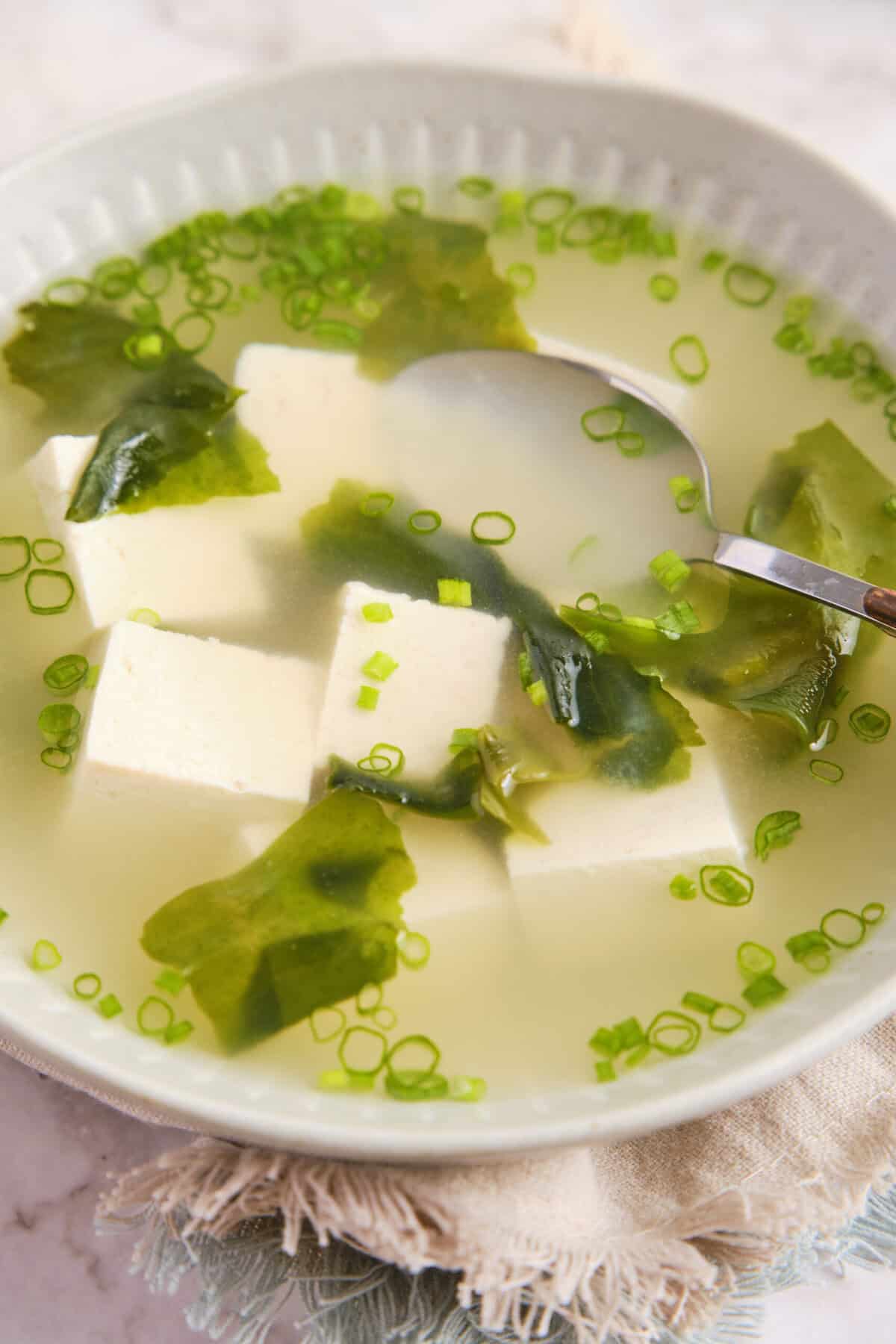
Serving Suggestions
This miso soup recipe is the perfect start to any Japanese meal. I like to serve it alongside this Sunomono Recipe (Japanese cucumber salad), Air-Fryer Shishito Peppers, Spicy California Roll, and Hamachi Sashimi. Then, when you’re ready to move on to your main dishes, consider Beef Teriyaki, Chicken Katsu, Seared Ahi Tuna Steak, and Rice Noodle Chicken Stir-Fry. This Fruit Soup is the perfect light and refreshing dessert, especially with a scoop of green tea or red bean ice cream.
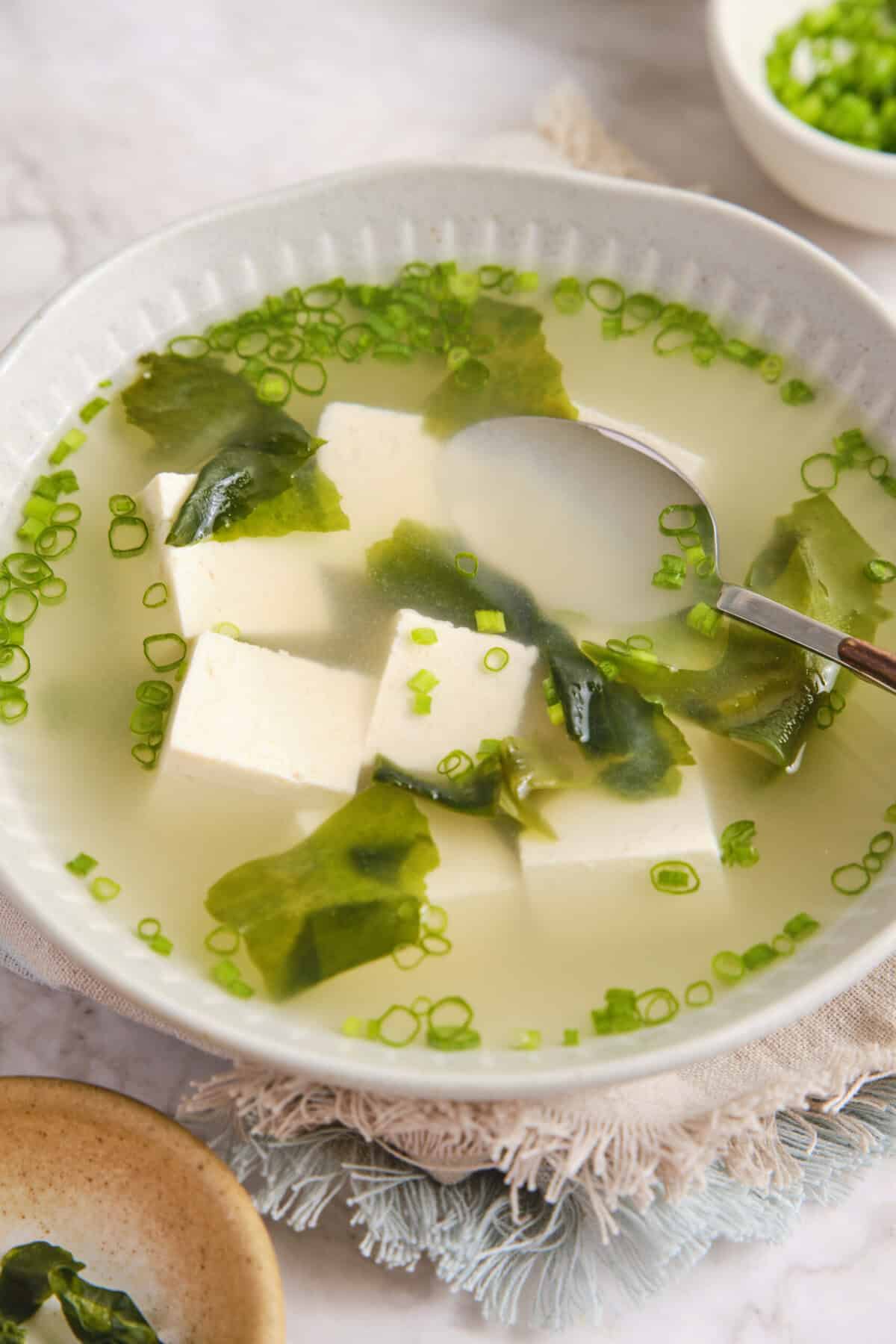
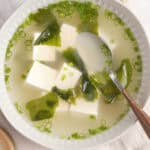
Miso Soup Recipe
Ingredients
- 4 cups water
- 2 teaspoons dashi granules
- 3 1/2 tablespoons white miso paste
- 8 ounces firm silken tofu diced
- 1 tablespoon dried wakame seaweed rehydrated
- 1 green onion thinly sliced
Instructions
-
Combine 4 cups water and 2 teaspoons dashi granules in a medium saucepan. Bring to a boil.

-
Lower the heat to low. In a small bowl, combine a small amount of broth with the miso paste, then whisk the miso paste into the remaining broth until it is smooth.

-
Stir in diced tofu and rehydrated wakame seaweed. Warm gently for 2 to 3 minutes without boiling.

-
Incorporate thinly sliced green onions, mix well, and serve while hot.

Nutrition
The post Miso Soup Recipe appeared first on Food Faith Fitness.

